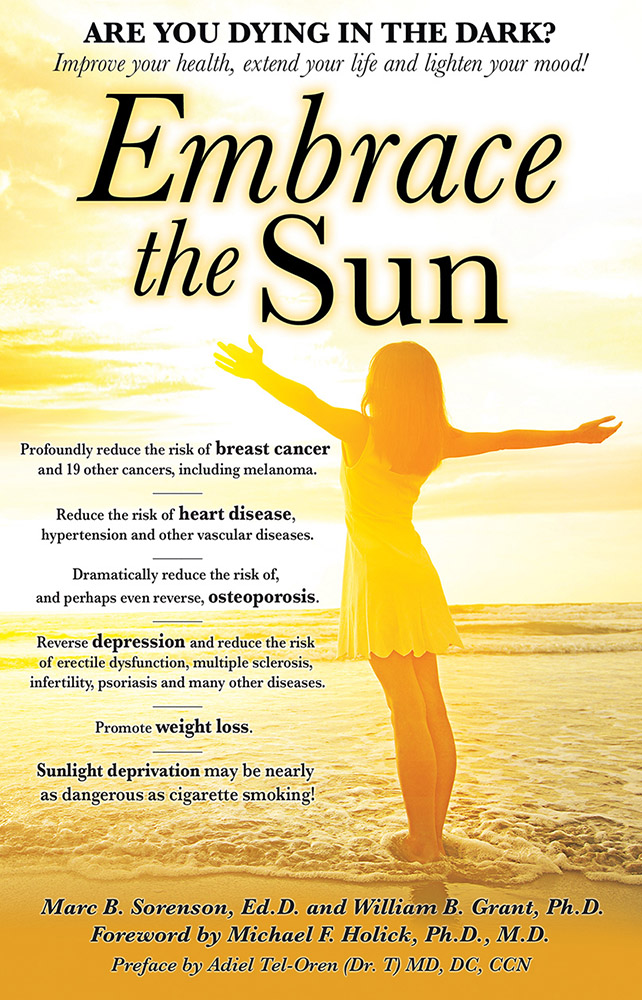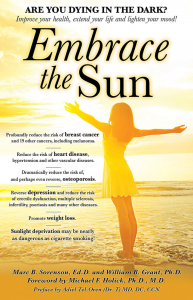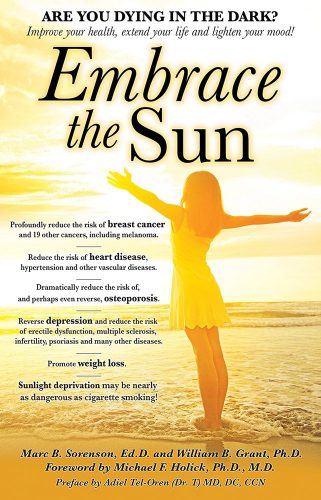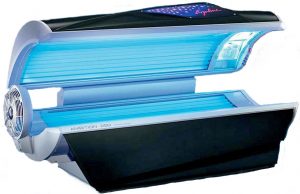Death by Prescription Drugs. By Marc Sorenson, EdD.
 Are there better ways to heal? Could there be better ways to fight the coronavirus? (be sure to scroll down to the WHO flu graph.)
Are there better ways to heal? Could there be better ways to fight the coronavirus? (be sure to scroll down to the WHO flu graph.)
Death by prescription drugs is commonplace. Therefore, perhaps whole foods, avoidance of junk foods and plenty of sunlight are better alternatives. Thus, our approach here will be (1) to explain the health burden inflicted by prescription drugs. (2) To make nutrition suggestions and (3) finally propose exercise and sunlight as additional solutions.
Death and prescription drugs. The danger is real!
Since you probably realize that prescription drugs are ubiquitous, did you also realize just how dangerous they are? Would it get your attention to tell you that they are the fourth leading cause of death?
U.S. News published an interesting article, which makes us wonder if our pharmaceuticals do more harm that good. Are they healers of killers? Here are some of the most noteworthy facts the article presents:
Salient points from the article on Death and prescriptions.
- First, prescription medications are the fourth leading cause of death and a major cause of additional illnesses among Americans.
- A recent analysis estimates 128,000 Americans die each year due to taking medications as prescribed.
- In addition, adverse drug reactions from properly prescribed and used medicines result in 1.5 to 2.7 million hospitalizations each year.
- Sixty to 70 percent of us take at least one prescribed drug and many take an additional fistful of pills daily.
- A quote from Dr. Donald Light [apropos, no?], who analyzed the data: “By far the greatest number of [prescription drug-related] hospitalizations and deaths occur from drugs that are prescribed properly by physicians and taken as directed.” This comes from his paper entitled “Institutional Corruption of Pharmaceuticals and the Myth of Safe and Effective Drugs.”
- Another quote from Dr. Light’s paper: “About 2,460 people per week are estimated to die from drugs that were properly prescribed. And that’s based on detailed chart reviews of hospitalized patients.” [That of course, does not include the 1.5-2.7 hospitalizations that occur due to prescriptions.]
- The paper continues, “And though following a doctor’s orders and medication labeling instructions can reduce harms associated with taking prescription drugs, simply taking prescribed drugs as directed can expose a person to significant risk.”
Of course, properly prescribed drugs can save lives. Yet, do these drugs give us the best odds? They do not.
All of this begs a question. Does the brouhaha caused by coronavirus not pale in comparison to the millions of lives lost to drugs? Of course, I believe in finding a cure. Nevertheless, when this pandemic subsides, should we not first look at ways to stop death due to prescription? There are better ways to prevent and cure illnesses, and the people must be educated. Knowledge not disseminated is no better than no knowledge at all.
An illustration of a better way than prescription drugs to stop death by diseases—diabetes and other maladies
An example: 2/3 of diabetics who attended our resort were able to stop medications in 11.7 days because of nutrition. In addition, of course, they soaked up the sun. Also, 85% of those who stayed for four weeks were able to leave without the meds. The avoided meds included injected insulin and hypoglycemic drugs (Metformin, Glucotrol, etc.]. That seems like a better option than another drug to “prevent” death. Of course, people must be willing to make changes to heal themselves. Avoiding death is unlikely if a person would rather die than part with junk food. The people at our resort liberated themselves from drugs by making the right choices.
And what about death from other diseases?
Diabetes, of course, was only one of myriad diseases they left behind when they returned home from their sojourns with us. A few others were arthritis, headaches, muscle pain, heart disease, lupus, asthma and obesity. Even erectile dysfunction, mood disorders, endurance and eyesight improved. In addition, nothing we did involved drugs and supplements. Good food, exercise and sunlight were the “medicines” we used. As Hippocrates once stated, “Let Food be your medicine.” He should have added, “Let sunlight and exercise also be your medicine.”
You knew I would get to sunlight and death, did you not?
Another method to enhance human health, while reducing human death: Bring people back into the safe, non-burning sunlight. My latest book, Embrace the Sun, co-authored by Dr. William Grant, has some interesting analyses. There are, in the U.S., according to our calculations, approximately 1,684,677 yearly deaths caused by diseases associated with sun deprivation. That compares to 5125 deaths from diseases associated with high sun exposure, producing a ratio of approximately 328:1. Now you can live with those odds (no pun intended)! Do we really need all those drugs if we give up our killer nutrition and soak up some non-burning sunlight?
Here are some facts everyone should know about death-preventing effects of regular, non-burning sun exposure:
- Seventy-five percent of melanomas occur on areas of the body seldom exposed to sun.
- Women who sunbathe regularly have half the risk of death during a 20-year period compared to those who stay indoors.
- Multiple sclerosis (MS) is highest in areas of little sunlight, and virtually disappears in areas of year-round direct sunlight.
- A Spanish study shows that women who seek the sun have one-eleventh the hip-fracture risk as sun avoiders.
- Women who avoid the sun have 10-times the risk of breast cancer as those who embrace the sun.
- Sun exposure decreases heart disease risk.
- Sun exposure dramatically improves mood.
- Those persons who spend more than 15 minutes outdoors have only 1/50 the risk of Parkinson’s disease!
- For each death caused by diseases associated with sun exposure, there are 328 deaths caused by diseases associated with sun deprivation.
- Sun exposure increases the production of BDNF, essential to nerve function.
- Sun exposure can produce as much as 20,000 IU of vitamin D in 20 minutes of full-body sun exposure.
- In the U.S., vitamin D deficiency in children has increased by 83 times during a 14-year period. That is likely due to indoor living and sunscreen use.
- Sunlight also directly associates with reduced incidence and death from flu. In the next three months, we may determine if it also reduces the incidence of coronavirus. (Chart courtesy of WHO. Sent by Goran Olsson, Moscow, Russia.) Note the incredible increase of flu in seasons of sun deprivation.

Therefore, you see, good nutrition and sunlight can reduce the need for prescriptions and lighten one more death burden. Embrace the Sun.
Childhood diseases prevented by Sunlight. by Marc Sorenson, EdD
Childhood diseases are directly associated with sun deprivation: Therefore, childhood death and disability can be due to lack of sun exposure!

Childhood diseases and disorders that are prevented by sun exposure have been discussed on many of my recent blogs. Our children are becoming ill due to our neglect. We must insist that they (or in some cases their mothers) play outside each day while eschewing their electronic devices. So, let’s now discuss a few more childhood diseases that are associate with sun deprivation. First of all, there is a 61% increase in death risk among children born to women with low 25(OH) D levels. Since sun exposure on skin is the main source of that photoproduct (vitamin D), the mothers lack sufficient sun exposure. Therefore, they do not furnish the necessary vitamin D to deliver a healthy baby. Furthermore, they are unlikely to bring their babies out in the sun after birth.
It is probably important at this point to mention a vital point. In many cases, vitamin D is exceptionally important. And in other cases, vitamin D may have little to do with the childhood diseases being considered. Since sun exposure leads to vitamin D production, vitamin D levels may simply be a surrogate measurement for sun exposure. Therefore, it may be other photoproducts of sun exposure that are creating some of the health benefits. And what are some of those other photoproducts that may reduce childhood diseases?
- Serotonin, which is one of the body’s natural “uppers”
- Endorphin, another feel-good hormone
- Dopamine, which affects learning and behavior and may help schizophrenia, to attention disorders, and cognitive reasoning
- Brain-derived neurotropic factor (BDNF), which is essential for nerve growth
- Nitric oxide, which reduces blood pressure and may help prevent heart disease.
Whenever vitamin D deficiency is blamed for childhood diseases, sun-exposure deficiency—which causes vitamin D deficiency—is the actual culprit.
Here are three more childhood diseases that are associated with low sunlight exposure:
Eczema: a disease that can be a part of childhood diseases
First of all, a study of children aged 0-17 years showed sun exposure was associated with lessened prevalence of eczema. Hence, children in the highest fourth of exposure were 20% less likely to experience eczema. This is one of the common childhood diseases.
Lack of bone mineralization and size: another of the childhood diseases.
An English investigation, involving 7,000 children, found bone size was positively related to sun exposure of mothers during pregnancies. Researchers conducted another study on children with on poor bone mineral density that predicted fractures. All of them had a significant increase in bone density because of a sun-exposure program that lasted a year. It is also most noteworthy that none of these children had a fracture after the start of the sun-exposure program.
Food allergy emergency: Another of the childhood diseases
Research from Boston states that children younger than 5 years, who were born in fall or winter (times of low sun exposure) had bad outcomes. They had about 50% increase in the risk of emergency room visits for food allergies. That is, compared with children born in spring or summer. Hence, the authors suggested this finding was related to differences in UVB (sun) exposure during their mother’s pregnancies.
In subsequent blogs we will discuss more childhood diseases that are triggered by sun deprivation. In the meantime find more information at sunlightinstitute.org and read the book, Embrace the Sun.
Happy sunning!

Is the sunbed a Gianus Bifrons (two-headed god)?
Sunbeds, Good or bad?
Recent research comes to the conclusion that indoor tanning is a Gianus Bifrons,[1] which is interpreted as a two-headed god. One head, according to these researchers, is an increase in various skin cancers (a dubious claim). The other head is the ability of sunbeds to produce large quantities of vitamin D, increasing serum vitamin D concentrations up to two fold. In addition, this increase in vitamin D, they believe, could lead to a decrease in myriad diseases.
The authors of the paper state the following: “Therefore, some favorable effects [of tanning beds] against the risk of developing many human diseases, including non-skin cancers, cannot be excluded at first glance, although they may not be only linked to [higher] vitamin D status.” They also go on to suggest that more research should be performed to determine if the unfavorable effects of indoor tanning on skin cancers may be outweighed by the favorable benefits of amelioration of low vitamin D levels.
This research ignored many research studies showing that regular, non-burning sun exposure is protective against melanoma. In my upcoming book, Embrace the sun, about 14 different research studies are cited. All of these studies demonstrate a positive effect of sun exposure. There are also positive effects of sun exposure and sunbed exposure, beyond the ability to produce vitamin D. Nitric oxide (NO) is produced by both. NO is a vasodilator that lowers blood pressure and reduces the risk of heart disease.
No increase in melanoma!
Perhaps the most important study to differentiate between the positive effects and negative effects of sunbed exposure is this one: A 20-year Swedish study demonstrated that women who used sunbeds were 23% less likely to die from any cause than women who did not use them.[2] This study also showed no increase in melanoma after the 20-year period.
So, what more do we need to know about the pros and cons of sunbed use?
Here are a few more positive effects of sunbeds on human health:
- Sunbed use reduces the risk of type 2 diabetes.[3]
- Sunbed use strengthens bone.[4]
- Sunbed use controls psoriasis and eczema.[5]
- Sunbed use reduces chronic pain.[6], [7]
- Sunbed use may help unborn children.[8]
- Sunbed use reduces the risk of clots.[9]
- Sunbed use is associated with lower breast-cancer risk.[10]
- Sunbed use reduces the risk of death.[11]
[1] Giuseppe Lippi*, 1, Gianfranco Cervellin†, Elisa Danese. Indoor Tanning a Gianus Bifrons:
Vitamin D and Human Cancer. Advances in Clinical Chemistry 2017;20:1-16
[2] Lindqvist PG, Epstein E, Landin-Olsson M, Ingvar C, Nielsen K, Stenbeck M, Olsson H. Avoidance of sun exposure is a risk factor for all-cause mortality: results from the Melanoma in Southern Sweden cohort. J Intern Med. 2014 Jul;276(1):77-86.
[3] P.G. Lindqvist, H. Olsson, M. Landin-Olsson, Are active sun exposure habits related
to lowering risk of type 2 diabetes mellitus in women, a prospective cohort
study?, Diabetes Res. Clin. Pract. 90 (2010):109-114.
[4] Tangpricha V, Turner A, Spina C, Decastro S, Chen TC, Holick MF. Tanning is associated with optimal vitamin D status (serum 25-hydroxyvitamin D concentration) and higher bone mineral density. Am J Clin Nutr 2004;80:1645-49.
[5] Radack KP, Farhangian ME, Anderson KL, Feldman SR. A review of the use of tanning beds as a dermatological treatment. Dermatol Ther (Heidelb). 2015 Mar;5(1):37-51.
[6] Kaur M, Feldman SR, Liguori A, Fleischer AB Jr. Indoor tanning relieves pain. Photodermatol Photoimmunol Photomed. 2005 Oct;21(5):278.
[7] Taylor SL, Kaur M, LoSicco K, Willard J, Camacho F, O’Rourke KS, Feldman SR. Pilot study of the effect of ultraviolet light on pain and mood in fibromyalgia syndrome. J Altern Complement Med. 2009 Jan;15(1):15-23.
[8] Bukhari, M. Quoted in London Times April 27, 2008.
[9] Lindqvist PG, Epstein E, Olsson H. Does an active sun exposure habit lower the risk of venous thrombotic events? A D-lightful hypothesis. J Thromb Haemost. 2009 Apr;7(4):605-10.
[10] Yang L, Veierød MB, Löf M, Sandin S, Adami HO, Weiderpass E. Prospective study of UV exposure and cancer incidence among Swedish women. J Intern Med. 2014 Jul;276(1):77-86
[11] Lindqvist PG, Epstein E, Landin-Olsson M, Ingvar C, Nielsen K, Stenbeck M, Olsson H. Avoidance of sun exposure is a risk factor for all-cause mortality: results from the Melanoma in Southern Sweden cohort. J Intern Med. 2014 Jul;276(1):77-86.
By Marc Sorenson, EdD, promoting sun exposure..
The world of science is waking up! New research states that 330,000 lives could be saved by optimizing vitamin D levels through sun exposure.[1] That compares to 450,000 deaths linked to tobacco. This is to be expected, since a Swedish study demonstrated that over a 20- year period, women who avoided the sun were TWICE AS LIKELY TO DIE OF ANY CAUSE, as women who were sun-seekers,[2] [3] and the researchers stated the following: “Nonsmokers who avoided sun exposure had a life expectancy similar to smokers in the highest sun exposure group, indicating that avoidance of sun exposure is a risk factor for death of a similar magnitude as smoking.”
It is no surprise that sun exposure saves lives. Here are a few facts that I have written about on the Sunlight Institute site. Go to news and search the fact you would like to read.
- As sun exposure in the U.S. has DECREASED by 90% during the last century, melanoma incidence has INCREASED BY 3,000%.
- A Spanish study shows that women who seek the sun have one-eleventh the hip fracture risk as those who avoid sun.
- Men who work outdoors have half the risk of melanoma as those who work indoors.
- Women who totally avoid the sun have 10-times the risk of breast cancer as those who embrace the sun.
- Sun exposure increases nitric oxide production, which leads to a decrease in heart attack risk.
- Vitamin D, the sunshine vitamin, is essential to human survival, and sun exposure is the only natural way to obtain it. Sunbathing can produce 20,000 units of vitamin D in 20 minutes of whole-body exposure.
- Sun exposure dramatically improves mood through the production of serotonin and endorphin.
- Beyond vitamin D, sun exposure also stimulates the production of endorphin, nitric oxide and BDNF, all of which are vital to human health.
- Regular sun exposure also reduces high blood pressure, psoriasis and multiple sclerosis (MS).
- So enjoy your sunshine, but don’t burn.
[1] David G. Hoel, Marianne Berwick, Frank R. de Gruijl & Michael F. Holick
(2016) The risks and benefits of sun exposure 2016, Dermato-Endocrinology, 8:1, e1248325,
DOI: 10.1080/19381980.2016.1248325
[2] Lindqvist PG, Epstein E, Nielsen K, Landin-Olsson M, Ingvar C, Olsson H. Avoidance of sun exposure as a risk factor for major causes of death: a competing risk analysis of the Melanoma in Southern Sweden cohort.
J Intern Med. 2016 Oct;280(4):375-87
[3] Lindqvist PG, Epstein E, Landin-Olsson M, Ingvar C, Nielsen K, Stenbeck M, Olsson H. Avoidance of sun exposure is a risk factor for all-cause mortality: results from the Melanoma in Southern Sweden cohort. J Intern Med. 2014 Jul;276(1):77-86
By Marc Sorenson, EdD, Sunlight Institute..
Inflammatory bowel diseases (IBD) include diseases such as Crohn’s disease and ulcerative colitis. Like multiple sclerosis, lupus and rheumatoid arthritis, they are autoimmune diseases that cause the immune system to attack its own tissue, in this case the tissues of the digestive system. This may cause extreme distress and damage.
Recent research shows that the IBD is associated with both sun exposure and vitamin D deficiency.[1] In experimental IBD, vitamin D positively influences gut epithelial cells, innate immune cells, T cells, and the microscopic organisms that live in the gut. Separately from vitamin D, there is some scientific work that demonstrates that ultraviolet radiation (UVR), a component of sun exposure, can independently reduce IBD cells.
The authors of this research sum up their research with the following statement: “Together the data suggest that UVR suppression of T cells and potentially IBD are both vitamin D dependent and independent.”
Of course, we know that the natural way to obtain vitamin D is through sun exposure, so to me it appears that sun exposure, or sunlamp exposure, when available is the best method of suppressing the disease. Of course, proper nutrition is also imperative.
Many previous investigations have shown the remarkable positive influence of sun exposure on IBD. In a 12-year year investigation of hundreds of thousands of IBD patients, hospitalizations and prolonged hospitalizations were higher among those who had low sun exposure compared to those with very high sun exposure.[2] The same relationship was shown between sun, bowel surgeries and deaths; more surgeries were needed for those patients who experienced the lowest sun exposure compared to those who had the highest sun exposure, and more deaths occurred among those with low exposure.
An interesting side note to this investigation was that a large number of non-IBD patients were also analyzed for sun exposure amounts. The same relationship existed as with the IBD patients; low sun exposure was associated with prolonged hospitalizations and more deaths when compared with high exposure. There is other research involving the association of Crohn’s disease to sun exposure, which, as above, found that surgery for the disease was significantly reduced among those patients who received more sun exposure.[3]
It has also been shown that in the US, there is a north-south gradient for IBD,[4] [5] [6] [7] meaning that the risk of developing IBD is significantly lower for the southern latitudes (where sun exposure is greater). So for a healthy gut, sun exposure plays a vital role. Be sure to get some sun exposure daily when available. That way, you will obtain your vitamin D, along with other photoproducts that may protect you from IBD as well as myriad other diseases.
[1] Bora S, Cantorna MT. The role of UVR and vitamin D on T cells and inflammatory bowel disease. Photochem Photobiol Sci. 2016 Sep 8. [Epub ahead of print].
[2]Limketkai BN, Bayless TM, Brant SR, Hutfless SM. Lower regional and temporal ultraviolet exposure is associated with increased rates and severity of inflammatory bowel disease hospitalization. Aliment Pharmacol Ther. 2014 Sep;40(5):508-17.
[3]Govani SM, Higgins PD, StidhamRW,Montain SJ, Waljee AK.Increased ultraviolet light exposure is associated with reduced risk of inpatient surgery among patients with Crohn’s disease.J Crohns Colitis. 2015 Jan;9(1):77-81
[4] Schultz M1, Butt AG. Is the north to south gradient in inflammatory bowel disease a global phenomenon? Expert Rev Gastroenterol Hepatol. 2012 Aug;6(4):445-7.
[5]Kappelman MD, Rifas-Shiman SL, Kleinman K, Ollendorf D, Bousvaros A, Grand RJ, Finkelstein JA. The prevalence and geographic distribution of Crohn’s disease and ulcerative colitis in the United States. Clin Gastroenterol Hepatol. 2007 Dec;5(12):1424-9.
[6]Sonnenberg A. Similar geographic variations of mortality and hospitalization associated with IBD and Clostridium difficile colitis. Inflamm Bowel Dis. 2010 Mar;16(3):487-93.
[7]Holmes EA, Xiang F, Lucas RM. Variation in incidence of pediatric Crohn’s disease in relation to latitude and ambient ultraviolet radiation: a systematic review and analysis.Inflamm Bowel Dis. 2015 Apr;21(4):809-17
By Marc Sorenson, EdD. Sunlight Institute
Although I occasionally try to balance the messages about tanning beds, this blog is meant neither to discourage nor promote their use. The readers should make up their minds after weighing the evidence. In a recent blog, I mentioned some positive messages about tanning-bed use, which included the following:[1] Note: all references for the following list are found in the blog under footnote 1.
- Tanning-bed use is associated with a reduced risk of clots.
- Tanning-bed use is associated with increased vitamin D levels.
- Tanning-bed use is associated with stronger bones
- Tanning-bed use can cure psoriasis and eczema and tanning beds are often recommended by dermatologists.
- Tanning-bed use more than three times yearly is associated with a 40-50% reduced risk of endometrial cancer.
- Tanning-bed use is associated to lower breast-cancer risk.
After I posted the above information, a friend from Canada reminded me of research by Dr. Pelle Lindqvist and his colleagues, which demonstrated that both sun exposure and tanning-bed exposure reduced the risk of death during a 20-year study.[2] Women who used tanning beds were 23% less likely to die of any cause than women who did not use them.
In addition, I remembered an older study that showed that tanning beds were able to take winter vitamin D levels up to summer levels in a period of five weeks.[3]
So, along with the bad rap tanning beds are receiving, there is some good news. Who wouldn’t want to live longer in better health? Still, as with all decisions, weigh the evidence and then decide.
[1] http://sunlightinstitute.org/defending-the-sun-from-the-lies-damn-lies-duplicity-deception-death-and-disease-of-the-anti-sun-business-part-3/
[2] Lindqvist P. Epstein E, Landin-Olsson M, Ingvar C, Nielsen K, Stenbeck M, Olsson H. Avoidance of sun exposure is a risk factor for all-cause mortality: Results from the Melanoma in Southern Sweden cohort
[3] Moan J, Lagunova Z, Cicarma E, Aksnes L, Dahlback A, Grant WB, Porojnicu AC. Sunbeds as vitamin D sources. Photochem Photobiol. 2009 Nov-Dec;85(6):1474-9.
By Marc Sorenson, EdD Sunlight Institute
Those of us that understand the importance on regular sun exposure on human health were not surprised by the most recent research by Dr. Pelle Lindqvist and colleagues. It showed that women who had active sun-exposure habits lived longer than those who did not.[1] Over a 20-year period, the study demonstrated that compared to the highest sun-exposure group, life expectancy of sun avoiders was reduced significantly. Much of the reduction in death among the sun-exposed group was due to a lessened risk of cardiovascular disease and non-cancer, non-cardiovascular death. The risk of skin cancer was slightly increased among the sun exposed group, primarily because they lived longer and had more time to contract cancer.
Perhaps the most impressive statement to come out of the research was this: “Nonsmokers who avoided sun exposure had a life expectancy similar to smokers in the highest sun exposure group, indicating that avoidance of sun exposure is a risk factor for death of a similar magnitude as smoking.”
This newest research is just one of several important contributions by Lindqvist and his group. Other assessments of the 20-year study revealed that the subjects who avoided sun exposure were twice as likely to die of any cause compared to those who had the highest sun exposure, and the researchers made this statement: “In both models the summary sun exposure variables showed a ‘dose-dependent’ inverse relation between sun exposure and all-cause death.”[2]
The research also showed that women with “normal” sun exposure habits were not at significantly increased risk of either melanoma or melanoma-related death. The publication seemed to give vitamin D most of the credit for increased life spans among those who had high sun exposures, but also mentioned the possibility that nitric-oxide production by sun-exposed skin may have been a factor.
If avoiding the sun is as dangerous as smoking cigarettes, why do many dermatologists still try to frighten us to death about soaking up some rays? Will they never learn?
[1] Lindqvist PG, Epstein E, Nielsen K, Landin-Olsson M, Ingvar C, Olsson H. Avoidance of sun exposure as a risk factor for major causes of death: a competing risk analysis of the Melanoma in Southern Sweden cohort. J Intern Med. 2016 Mar 16. doi: 10.1111/joim.12496. [Epub ahead of print].
[2] Pelle G. Lindqvist, Elisabeth Epstein, Mona Landin-Olsson, Christian Ingvar, Kari Nielsen, Magnus Stenbeck & Håkan Olsson. Avoidance of sun exposure is a risk factor for all-cause mortality: results from the Melanoma in Southern Sweden cohort. J Intern Med. 2014 Jul;276(1):77-86.
By Marc Sorenson, EdD, Sunlight Institute
Let’s revisit the need for appropriate nutrition in preventing melanoma death.
It has been well-established that melanoma is not caused by sunlight exposure, despite the sunphobes’ protestations to the contrary. There are numerous research papers that indicate melanoma is considerably less frequent among those who are regularly exposed to sunlight than among those who avoid it.[1] [2] [3] [4] [5] (The references cited here are only a few of the many papers that corroborate the fact that melanoma is less common among those who embrace the sun.)



